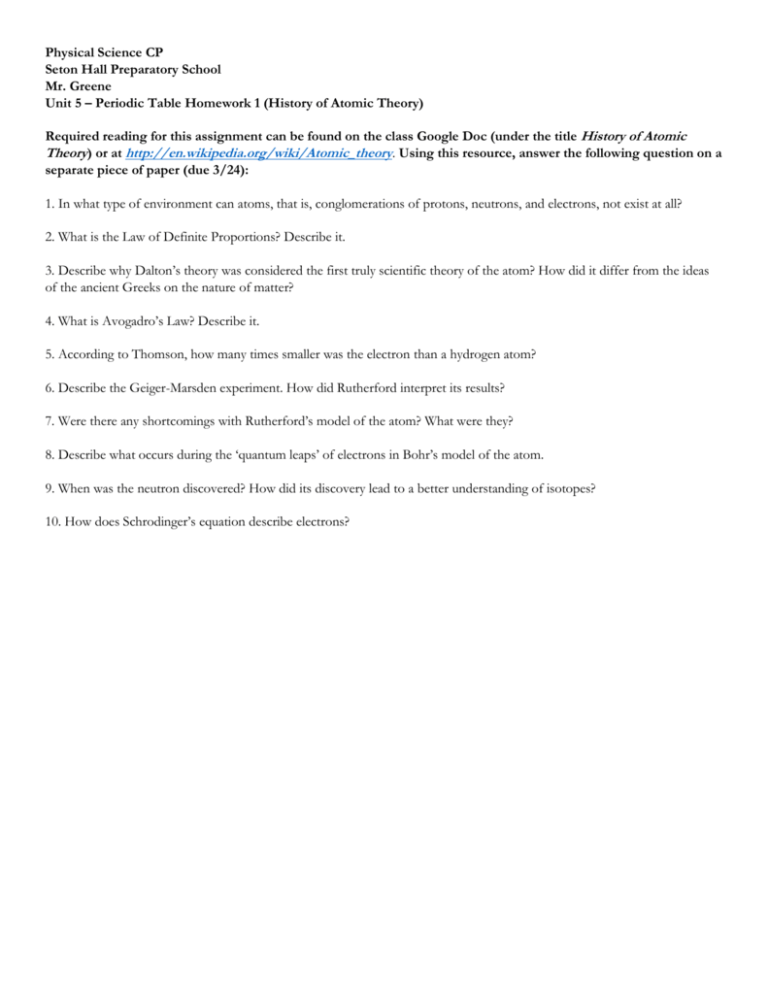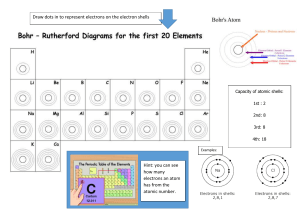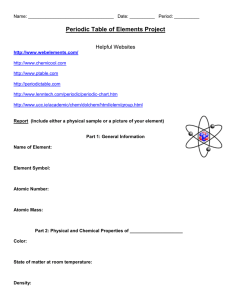Physical Science CP Seton Hall Preparatory School Mr. Greene Unit
advertisement

Physical Science CP Seton Hall Preparatory School Mr. Greene Unit 5 – Periodic Table Homework 1 (History of Atomic Theory) Required reading for this assignment can be found on the class Google Doc (under the title History of Atomic Theory) or at http://en.wikipedia.org/wiki/Atomic_theory. Using this resource, answer the following question on a separate piece of paper (due 3/24): 1. In what type of environment can atoms, that is, conglomerations of protons, neutrons, and electrons, not exist at all? 2. What is the Law of Definite Proportions? Describe it. 3. Describe why Dalton’s theory was considered the first truly scientific theory of the atom? How did it differ from the ideas of the ancient Greeks on the nature of matter? 4. What is Avogadro’s Law? Describe it. 5. According to Thomson, how many times smaller was the electron than a hydrogen atom? 6. Describe the Geiger-Marsden experiment. How did Rutherford interpret its results? 7. Were there any shortcomings with Rutherford’s model of the atom? What were they? 8. Describe what occurs during the ‘quantum leaps’ of electrons in Bohr’s model of the atom. 9. When was the neutron discovered? How did its discovery lead to a better understanding of isotopes? 10. How does Schrodinger’s equation describe electrons?











